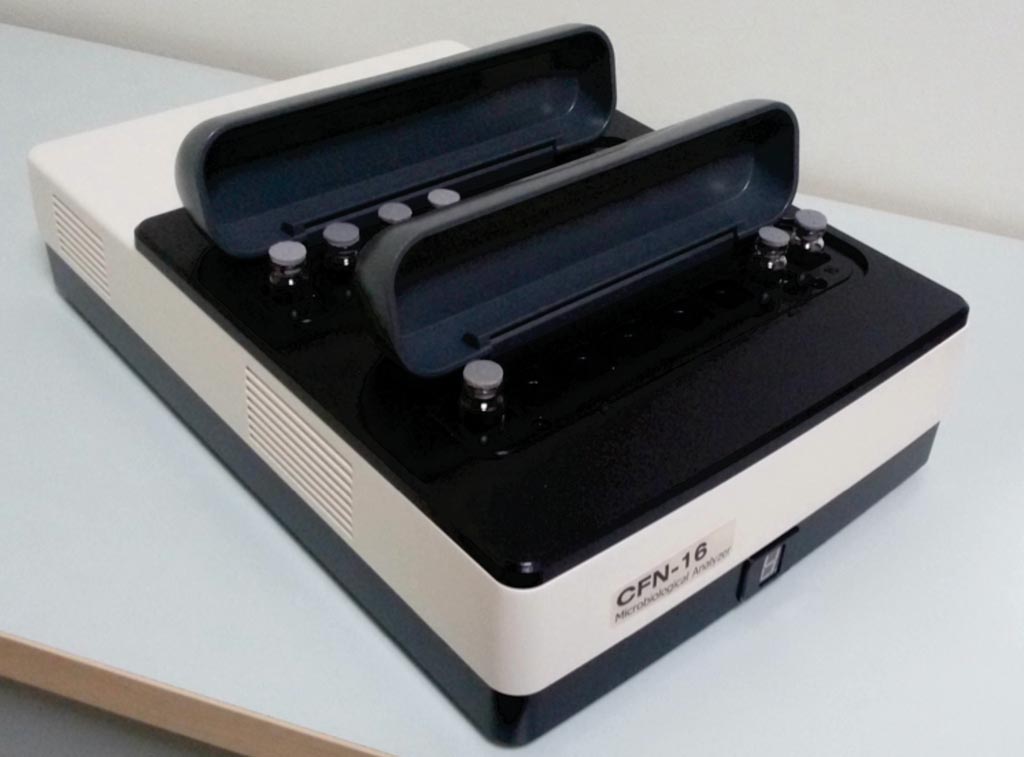Coherent Fluctuation Nephelometry Used to Diagnose Bacteriuria
By LabMedica International staff writers
Posted on 21 Aug 2018
Urinary tract infections (UTI) belong to the most common infectious diseases, making 20% to 49% of all nosocomial infections. For correct UTI diagnosis, the knowledge about the presence of microorganisms in urine is needed and such diagnosis is traditionally carried out by culture methods using solid nutrient media.Posted on 21 Aug 2018
Specialized analyzers are used to automate the diagnosis of bacteriuria in laboratory practice. They are based on analysis of microorganisms concentration in urine samples or recording the growth of urine microflora. Coherent fluctuation nephelometry (CFN) has high sensitivity and allows analyzing both parameters simultaneously.

Image: Coherent fluctuation nephelometry analyses microbiological concentrations in urine (Photo courtesy of Medtechnopark).
Scientists at the M.F. Vladimirsky Moscow Regional Clinical and Research Institute (Moscow, Russian Federation) collected 117 urine samples for routine microbiological testing in hospital and outpatient departments. Every urine sample was divided into three parts. One part was used for culturing on Uriselect chromogenic agar. The second part was tested using the CFN-analyzer; and the third part was analyzed using UF-1000i.
Urine samples were centrifuged for 60 seconds at 3,000 rpm (1,700 g) to sediment large impurities (such as cells, salts, mucus). During such centrifugation, microorganisms do not sediment onto the bottom of the test tube and stay in the volume of the liquid. Then 0.5 mL of the supernatant was mixed with 0.5 ml sugar broth, placed into disposable 1 mL semi-micro cuvettes, and closed with disposable stoppers. The team placed the cuvettes into CFN-P-12 analyzer and incubated for eight hours.
The scientists reported that in 21 urine samples (18%), significant bacteriuria was determined (equal to or greater than 104 CFU/mL). The best diagnostic indicators were obtained while testing urine samples using the CFN-analyzer. The most efficient bacteriuria diagnosis was achieved by simultaneous analyses of microorganisms concentration in urine and growth of urine microflora. The CFN-analyzer allows the preliminary selection of negative urine samples, which do not require further analysis by conventional microbiological methods, thereby decreasing the number of cultures by 80.3%. The authors concluded that their study suggests that the CFN-analyzer is the effective tool for bacteriuria screening in children. The study was published online on July 18, 2018, in the journal Practical Laboratory Medicine.
Related Links:
M.F. Vladimirsky Moscow Regional Clinical and Research Institute














